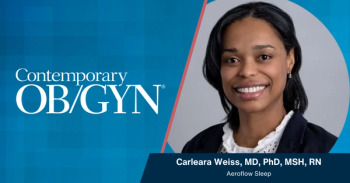
Tony Anderson, DHSc, ELD, highlights AI's growing role in IVF
Emerging AI tools are improving efficiency and precision in IVF labs, but high costs and training limitations still prevent them from replacing manual expertise.
In a recent discussion with Contemporary OB/GYN, Tony Anderson, DHSc, ELD, founder of IVF Academy USA, highlighted the growing but nuanced role of artificial intelligence (AI) in in vitro fertilization (IVF) laboratories.
While AI represents a broad and evolving technological category, Anderson emphasized that some forms of AI are already embedded in routine fertility care, particularly in semen analysis and sperm selection. One of the earliest examples is the LensHooke analyzer, an FDA-approved system that automates semen assessment.
By measuring sperm count, motility, and morphology without human interpretation, the device transforms semen analysis—a traditionally high-complexity test—into a waived test under CLIA guidelines. This automation significantly reduces workload and time, shrinking a 30-minute manual evaluation to a 4-minute process while maintaining accuracy and precision. Anderson noted that this efficiency allows laboratories to handle more volume without compromising quality.
AI-driven sperm identification systems, such as Sperm ID, represent another emerging application. These tools assist embryologists in selecting sperm for intracytoplasmic sperm injection. Although the technology can slow down procedures because of its current developmental stage, the goal is to enhance selection accuracy by identifying sperm with the most favorable characteristics.
Anderson’s own IVF Academy students conducted research comparing AI-assisted sperm selection with various sperm preparation methods. Surprisingly, microfluidic devices—known for producing sperm with low DNA fragmentation—were identified by the AI as the “worst” option, despite their strong performance in traditional assessments.
This outcome underscored a key principle: AI systems can only perform as effectively as the data and training they receive. If trained on a narrow set of conditions or preparation methods, their outputs may not generalize across real-world variability. Continuous retraining and iterative improvement are therefore essential.
Despite AI’s growing potential, Anderson stressed that significant limitations prevent these technologies from replacing manual work in IVF labs. Chief among these is cost. Each AI platform introduces an added fee, often around $150 per patient, which may seem modest individually but becomes substantial when multiple AI tools are stacked within a single IVF cycle.
Unlike capital equipment such as microscopes, which can be depreciated over many years, AI tools often rely on recurring per-use or per-cycle costs, driving up patient expenses. Anderson suggested that more sustainable pricing models—such as low-cost, per-embryo or subscription-based structures similar to fitness or nutrition apps—could make AI integration more feasible without imposing financial strain.
Overall, Anderson views AI as a promising but still maturing component of IVF care—one that requires thoughtful development, continuous refinement, and practical cost considerations before it can reach its full potential.
This video is part 1 of a 2-part series. Check back tomorrow for part 2.
No relevant disclosures.
Newsletter
Get the latest clinical updates, case studies, and expert commentary in obstetric and gynecologic care. Sign up now to stay informed.















